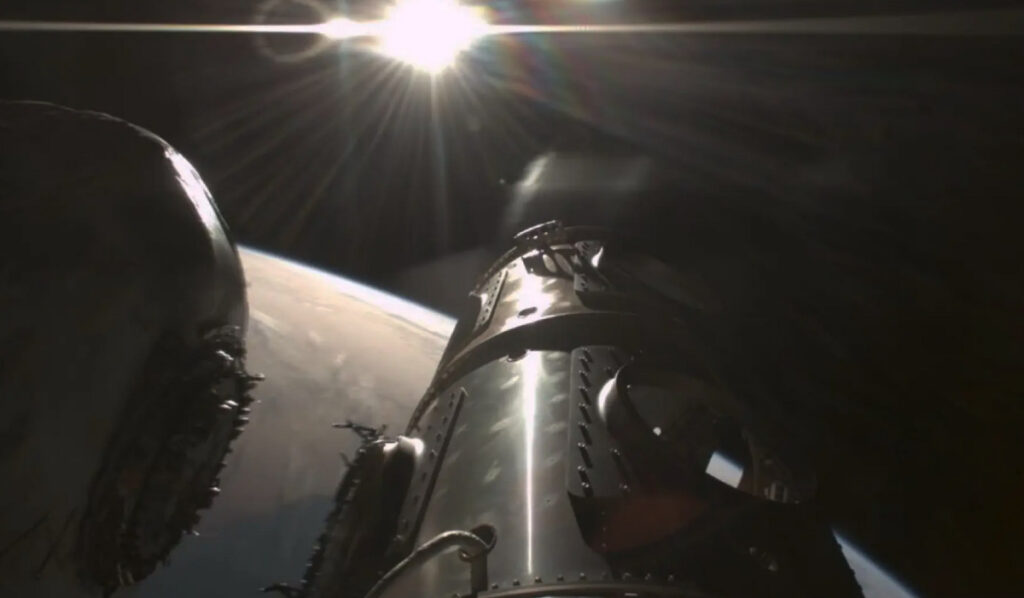
ATMOS Space Cargo (ATMOS) has conducted the first orbital test flight of its innovative PHOENIX 1 re-entry capsule to and back from LEO.

Initial analysis confirms that the mission achieved its primary objectives, including the activation of key systems and deployment of ATMOS’ proprietary inflatable heat shield under realistic re-entry conditions. ATMOS Mission Control in Lichtenau, Germany, adds that expected flight data from the capsule and its onboard customer payloads has been successfully transmitted and is currently undergoing detailed analysis.
These findings add critical information early to the already started development of the next-generation PHOENIX 2 capsule, which is planned to launch in 2026. This flight establishes ATMOS as the fastest-moving private space logistics company in Europe to conduct an orbital return mission and also demonstrates that sovereign return capabilities are within reach—and that private industry is ready to lead in building Europe’s independent space infrastructure.
PHOENIX 1 launched into space aboard a SpaceX Falcon 9 rocket from Launch Complex 40 (SLC-40), Cape Canaveral Space Force Station, Florida at 20:48 local time, as part of the Bandwagon-3 rideshare mission. Following injection into a 45° inclination orbit, the capsule completed one full orbit. A planned de-orbit burn by the Falcon 9 upper stage over Los Angeles, California, then placed PHOENIX 1 on its return trajectory.

Following upper stage separation, PHOENIX 1 began its return trajectory, transmitting critical system and payload data to ground stations the ATMOS ground segment team set up across South America. As planned, the capsule performed initial inflation of its heat shield before entering Earth’s atmosphere at the Entry Interface Point (EIP) approximately two hours post-launch south-east of the Brazilian coast.

Due to a trajectory update and extended splashdown distance (~2,000 km off the coast), recovery was not planned—effected by the increased distance from available marine infrastructure. ATMOS’ current roadmap for PHOENIX 2 confirms to feature its own propulsion system, enabling the capsule to choose its re-entry trajectory and splashdown zone, enabling swift recovery. ATMOS will share further mission details upon completion of data analysis.
PHOENIX 1 delivered on its objectives and our roadmap. Dedicated people show up, go to work and get results—we are not here to guess. Completing this mission with a flight-ready capsule in such a short time frame is a major validation of our design and approach under real conditions. As a side effect it gave proof that we are able to conduct a multinational operation to create a valuable and inspiring outcome across the entire team and beyond. We’re on track to build PHOENIX 2 – a next gen capsule capable of setting its own return trajectory, unlocking the most flexible, cost-efficient and reliable end-to-end space logistics platform in the space industry,” said Sebastian Klaus, CEO and Co-Founder of ATMOS.
We designed PHOENIX 1 to move fast without compromising core reliability, fundamental for any spacecraft. Thanks to the experience and fast problem solving skill set our team brings to the workshop, we achieved flight qualification in record time. Building and launching a space-ready capsule in under a year required tight iteration and testing, good communication, and a team spirit beyond expectations. This flight – and the engineering process that led us here – taught us valuable lessons on the design of the next iteration, PHOENIX 2,” said Christian Grimm, Lead Systems Engineer and Co-Founder at ATMOS Space Cargo
